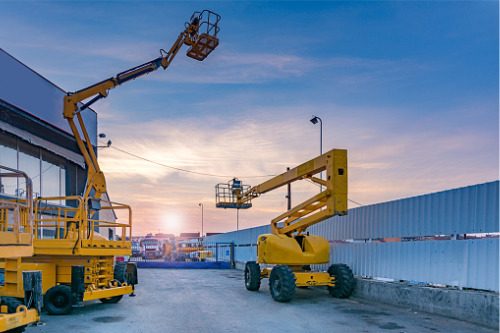

The construction sector has often been called the backbone of the Canadian economy, employing more than 1.2 million workers that represent around 7% of the total Canadian workforce. This sector is also expected be worth $455 billion by 2024, according to Randstad – nothing to sneer at as COVID-19 continues to take a toll on many other industries and the broader national economy.
Nonetheless, the sector is not without its challenges. During a recent webinar, Burns & Wilcox experts outlined the current environment for architects and engineers, and discussed what brokers should keep in mind as they navigate the insurance marketplace.
“When there are mistakes that are made within this space, it’s more than just typical professional liability,” said David Derigiotis, corporate senior vice president and national professional liability practice leader at Burns & Wilcox. “There’s so much more at stake … If there is a shortcut taken by an engineer or design firm, if there are cheaper goods that are used in the process, or if they just flat out get the design wrong during the process, the results can be more than just financial loss.”
A failed project could lead to property destruction or even loss of life. When you throw the coronavirus into the mix, the challenges and risks increase further. For example, restaurants and eateries have had to retrofit and change their environments so that they can meet guidelines on proper social distancing, which brings with it design risks – and the challenges only start there.
Alongside what another expert called the “never-ending changes in permitting and code,” construction is an industry that has been subject to the rise and fall of custom materials, labour shortages, recessions, and the use of technology, explained Michelle Picklesimer, underwriting director at Burns & Wilcox.
Now with COVID-19, “We’re seeing material costs increase again – the cost of steel hasn’t been this high since 2018 … and if anybody attempted a home improvement project over the summer, you know that the cost of lumber has gone up 50% over the last year,” continued Picklesimer.
She also highlighted that managing project logistics is another challenge, as well as scheduling to ensure that a project can be staffed adequately, and contractual amendments to account for increased costs, or changes in schedules and scope of services. Additionally, for design teams that have been able to work from home, professionals are facing hurdles involving decreased creativity and isolation due to their new work environments.
Amid all of these new exposures, the property and casualty insurance market has likewise been evolving and changing, often putting further pressure on design professionals.
“The net underwriting income in the P&C industry for the first nine months of 2020 plunged by 86% … compared to the first nine months of 2019,” said Paula Lansky, senior underwriter at Burns & Wilcox Canada, referencing a recent A.M. Best article. “Let’s remember that the insurance industry as a whole has been extremely soft for well over a decade. Justifiable corrections in the property market that were fuelled by triple-digit loss ratios have contributed to a spin-off hardening in the liability sector. On the property side, we have seen triple, quadruple, or more multiples of premiums in 2020.”
One positive factor to note in this challenging period is that construction revenues have remained stable in North America, and the industry has not been shut down due to COVID. It will also likely continue to be at the forefront of investment for governments as the crisis abates. That may be where the positivity ends, however.
“Markets that many of us have seen throughout our entire careers are exiting the E&O space for architects and engineers,” said Lansky. “Other markets are being more selective, non-renewing underperforming sections, and that’s potentially before they too exit the market. More and more in Canada and the US, we are seeing carriers pull renewals from the streamlined automatic renewal process in order to go back to underwriting individual accounts.”
If that wasn’t enough of a challenge, there have been additional conditions that underwriters have needed to consider in the A&E space, such as historical poor performance with limited underwriting profit for design professionals E&O, as well as the challenges that have been presented by COVID.
“There’s market disruption all over the place … At the company level, we have seen so much movement and changes in staff, even up to the senior management level, that carriers are re-underwriting the previous underwriter’s judgments,” explained Lansky. “There is that inherent need to get rate in order to balance portfolios.”
Brokers working with A&E clients need to prepare themselves for the new normal that today often accompanies writing these risks. For one, incumbent markets are often not communicating their underwriting decisions until seven to 10 days before the renewal, with some deciding at that point that they’re not going to renew. As a result, brokers are flooding the market with submissions, explained Lansky. Burns & Wilcox is also seeing some communicable disease exclusions being added to policies, which means it’s critical that brokers are closely reading the documents.
“There is more of a focus on due diligence and significant underwriting practices,” she noted, adding, “In Canada, we have seen specific COVID questionnaires that are sometimes longer than an actual new business application.”
